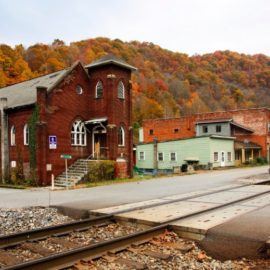

This article is an excerpt from the Shortform book guide to "Trailblazer" by Marc Benioff and Monica Langley. Shortform has the world's best summaries and analyses of books you should be reading.
Like this article? Sign up for a free trial here.
What will the Fifth Industrial Revolution look like? How are principled businesses like Salesforce preparing for the Fifth Industrial Revolution?
Marc Benioff believes that humanity is on the cusp of the Fifth Industrial Revolution. This is an era where moral responsibility will be built into technological innovation as the industry’s underlying purpose and guiding ethos.
Take a look at how Salesforce is getting ahead of the Fifth Industrial Revolution.
Principled Businesses Are Preparing for the Fifth Industrial Revolution
As we transition into the Fifth Industrial Revolution, Benioff says, principled business will become a matter of course because stakeholders will demand it. These stakeholders include conscientious customers and employees, an enlightened society that is increasingly intolerant of businesses’ bad behavior, and a global environment that demands sustainability to prevent large-scale ecological collapse. Since principled business leads to better financial outcomes, investors and stockholders will demand it, too.
Benioff says Salesforce is also dedicated to making technological and social advancements. He explains that three people influenced his decision to prioritize this principle: First, his grandfather, a lawyer and local politician responsible for the advent of Bay Area Rapid Transit (BART), instilled in him the importance of contributing to social causes. Second, before Benioff founded Salesforce, he worked at a company that then-Secretary of State Colin Powell challenged to donate resources to underprivileged youth. Third, Apple’s founder, Steve Jobs, told him that Salesforce needed to invent new technologies to stay relevant in a rapidly changing market.
Another way Benioff says Salesforce meets societal needs is through its 1-1-1 program: In addition to promoting employee volunteerism, Salesforce Foundation donates 1% of its money and resources like computers to communities in need. It also encourages other corporations to follow suit via its Pledge 1% campaign. As for the environment, Benioff says Salesforce is improving the sustainability of its operations and donates employee time to environmental causes.
Benioff also explains that as the impactful leader of a large, successful corporation with a wealth of resources at his disposal, he feels compelled to proactively address stakeholders’ problems in his personal life. This compulsion has led him to take personal responsibility for addressing social and environmental problems—he hopes that by demonstrating the power CEOs have to steward society and the environment, he’ll set an example for other business leaders and inspire them to get involved. He’s involved in traditional philanthropy—for example, he founded the Benioff Ocean Initiative to fund marine conservation research—which is common for CEOs, but he takes his responsibility a step further by campaigning for political change.
| A Journey Through the Industrial Revolutions Experts generally agree with Benioff that so far, humanity has witnessed four industrial revolutions and is rapidly approaching a fifth. Let’s explore this series of industrial revolutions and consider what sets the Fifth Industrial Revolution apart from its predecessors. First, what do we mean by “industrial revolution?” The phrase is used to refer to periods of rapid technological innovation that precipitate major socioeconomic changes; together, these developments reshape the cultural landscapes of affected societies. The First Industrial Revolution took place in Britain at the turn of the 19th century and was marked by the harnessing of steam-powered technologies, which facilitated a transition from handmade to machine-made goods, revitalized agriculture, and led to the innovation of a new mode of transportation: trains. These changes spread to the US, which fueled the Second Industrial Revolution between the US Civil War and World War I. This revolution featured the refinement and expansion of technologies brought about by the first revolution, as well as mass electrification of American homes and businesses. The Third Industrial Revolution began at the end of World War II and extended through the early 2000s. It’s also known as the Digital Revolution because it spurred the development of the first digital technologies, including computers, the Internet, and a new form of digital business called the platform, which Geoffrey G. Parker, Marshall W. Van Alstyne, and Sangeet Paul Choudary explore in detail in Platform Revolution. This period was swiftly followed by the Fourth Industrial Revolution, currently ongoing, which features four transformations: enhanced automation and robotics, advances in artificial intelligence, innovations in engineering, and the rise of data-driven and connectivity-based business. The Fifth Industrial Revolution prophesied by Benioff and other experts promises to harness technological innovation to augment human life, enhance global wellbeing, and restore nature. This focus makes the Fifth Industrial Revolution unique, since earlier industrial revolutions used technology primarily to drive economic growth, often at the expense of human life and environmental preservation. (For example, Roxanne Dunbar-Ortiz explains how the post-Civil War expansion of railroads disrupted Native American life and destroyed Western American ecosystems in An Indigenous Peoples’ History of the United States). |

———End of Preview———
Like what you just read? Read the rest of the world's best book summary and analysis of Marc Benioff and Monica Langley's "Trailblazer" at Shortform.
Here's what you'll find in our full Trailblazer summary:
- What “principled business” means and why it matters to you
- The priority that Salesforce—a Fortune 500 company—puts before profit
- How capitalism can look different in the future






